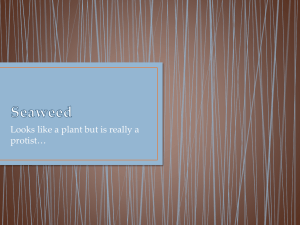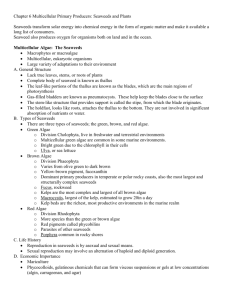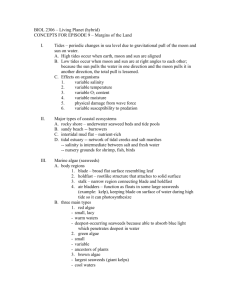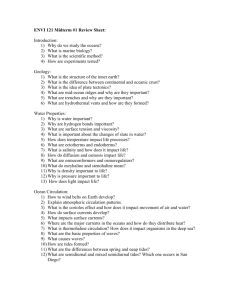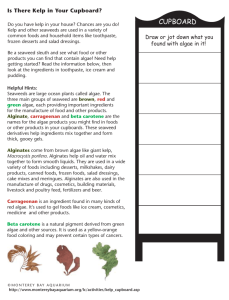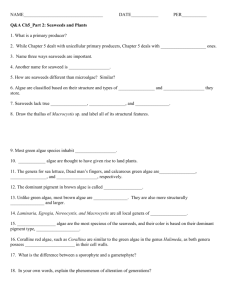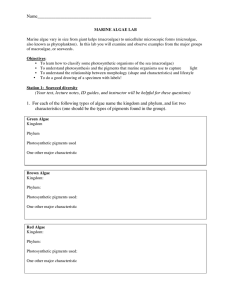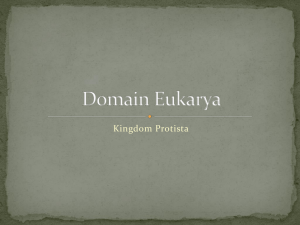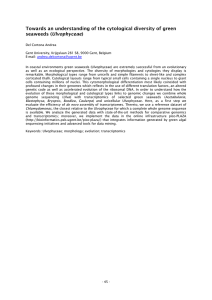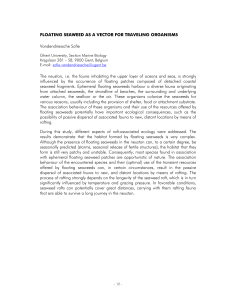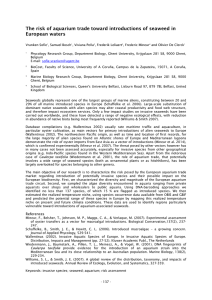What is Seaweed? - Marine Biology Prunedale
advertisement
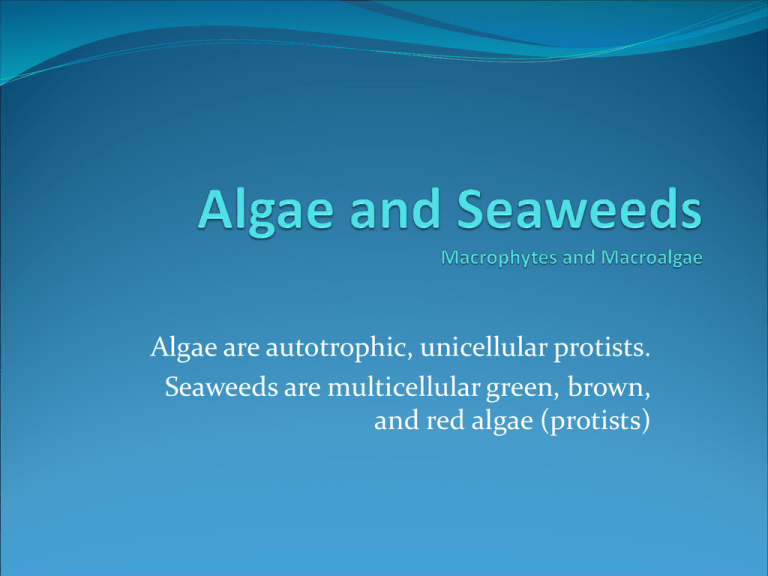
Algae are autotrophic, unicellular protists. Seaweeds are multicellular green, brown, and red algae (protists) • What is Seaweed? It is not a plant!!! • Seaweeds, as its name suggests is a loose colloquial term encompassing macroscopic, multicellular, benthic marine algae. The term includes some members of the red, brown and green algae. • Seaweeds are extensively used as food by coastal people around the world. They are either eaten raw, cooked or processed. Seaweeds are also being used as medicine and other medical applications (like treating cancer). • Red seaweeds are extensively farmed and produced in the Philippines. Red seaweeds are the raw materials that produces Carrageenan, a jelly substance used as food additive or ingredient to thicken products such as instant puddings and ice cream. Seaweeds are primary producers using light energy to perform photosynthesis. There are a few seaweeds that are parasitic on other seaweeds. Seaweeds lack the highly specialized structures and reproductive mechanisms of land plants. The variation among seaweeds is spectacular. Thallus - The complete body, whether it is a filament, a thin leafy sheet, a crusty cushion or a giant kelp. Blade - The leaf-like, flattened portions of the thallus. Not leaves because it has no veins. The blades increase the surface area and are the main photosynthetic region of the seaweed. Pneumatocysts – gas-filled bladder that keeps the blades floating near to the surface for maximum light exposure. Stipe – a distinct stem-like structure that provides support from which the blades originate. Holdfast – looks like roots, but they do not absorb significant amounts of water or nutrients, or penetrate the sand or mud. The holdfast anchors the seaweed to the rocks, and are well-developed in the kelps. Seaweed Farms in Indonesia Diver in Kelp Forest Macrocystis-Giant Kelp Diver with Bull Kelp Red Algae Red Algae Red Algae
